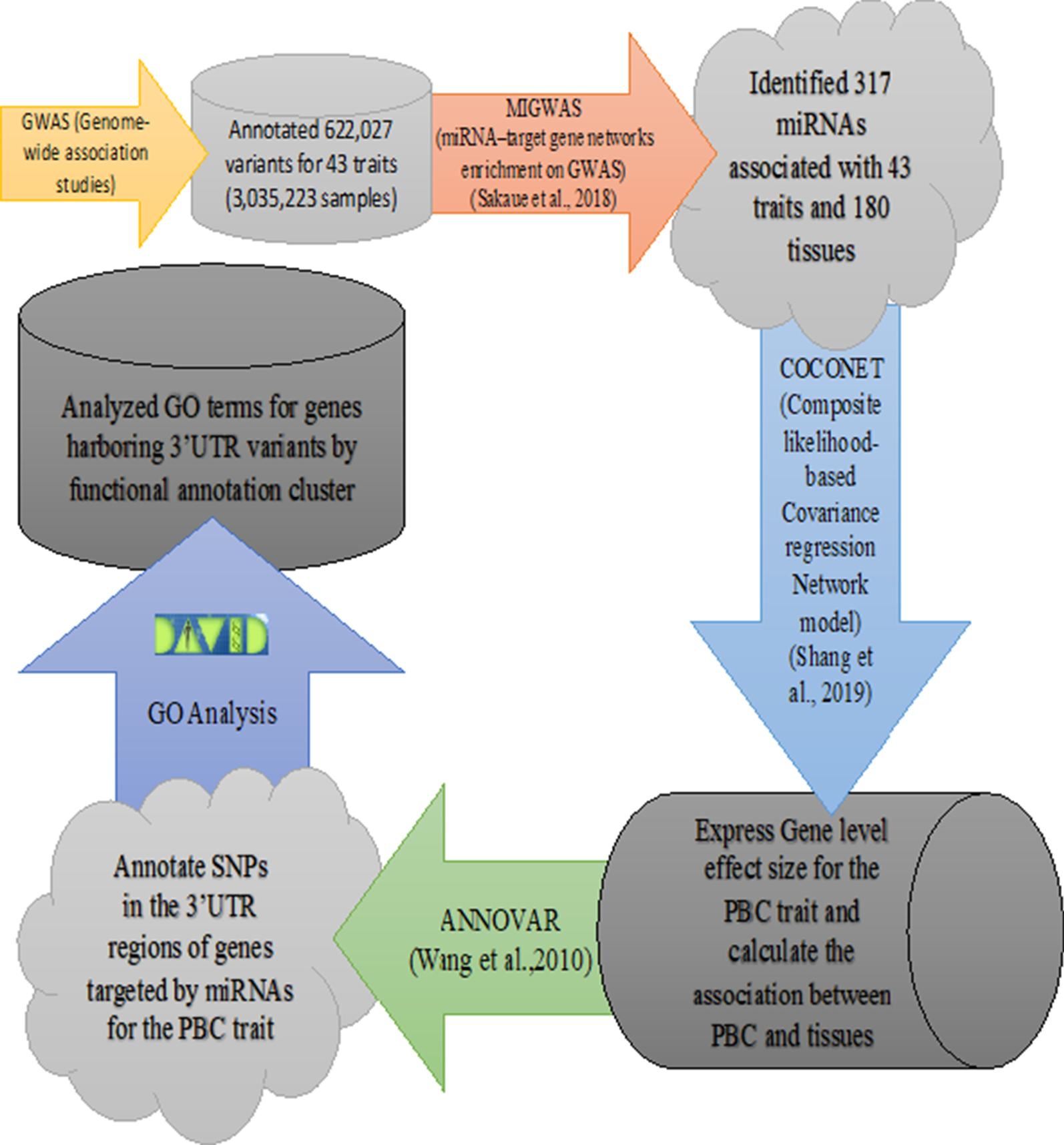Abstract
Background Understanding gene regulation is important but difficult. Elucidating tissue-specific gene regulation mechanism is even more challenging and requires gene co-expression network assembled from protein–protein interaction, transcription factor and gene binding, and post-transcriptional regulation (e.g., miRNA targeting) informa- tion. The miRNA binding affinity could therefore be changed by SNP(s) located at the 3′ untranslated regions (3′UTR) of the target messenger RNA (mRNA) which miRNA(s) interacts with. Genome-wide association study (GWAS) has reported significant numbers of loci hosting SNPs associated with many traits. The goal of this study is to pinpoint GWAS functional variants located in 3′UTRs and elucidate if the genes harboring these variants along with their tar- geting miRNAs are associated with genetic traits relevant to certain tissues.
Materials and Methods By applying MIGWAS, CoCoNet, ANNOVAR, and DAVID bioinformatics software and utilizing the gene expression database (e.g. GTEx data) to study GWAS summary statistics for 43 traits from 28 GWAS studies, we have identified a list of miRNAs and targeted genes harboring 3′UTR variants, which could contribute to trait-relevant tissue over miRNA-target gene network.
Results Our result demonstrated that strong association between traits and tissues exists, and in particular, the Primary Biliary Cirrhosis (PBC) trait has the most significant p-value for all 180 tissues among all 43 traits used for this study. We reported SNPs located in 3′UTR regions of genes (SFMBT2, ZC3HAV1, and UGT3A1) targeted by miRNAs for PBC trait and its tissue association network. After employing Gene Ontology (GO) analysis for PBC trait, we have also identified a very important miRNA targeted gene over miRNA-target gene network, PFKL, which encodes the liver subunit of an enzyme.
Conclusion
The non-coding variants identified from GWAS studies are casually assumed to be not critical to trans- lated protein product. However, 3′ untranslated regions (3′UTRs) of genes harbor variants can often change the bind- ing affinity of targeting miRNAs playing important roles in protein translation degree. Our study has shown that GWAS variants could play important roles on miRNA-target gene networks by contributing the association between traits.
